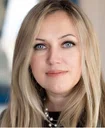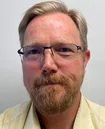


DIRECTORS (TWO TO BE ELECTED)

Vanessa A. Brady, MS, CIH, CSP
Director of Global EHS
The Estée Lauder Companies Inc.
Melville, New York
The one initiative that stands out and excites me the most is “State of the Art vs. State of the Practice.”
To most people, state of the art means the highest point of technological achievement to date, which for many people means new and expensive. In our profession, it means best-in-class. As part of a continuous-improvement strategy and keeping up with changing times, we need to holistically look at our state of practice and identify and address OEHS gaps. By working for a global company, I am involved with which occupational limits will be referenced in our industrial hygiene sampling surveys. For U.S. assessments, instead of using OSHA PELs that are outdated and inadequate for ensuring protection of worker health, we aim for best-in-class and choose contemporary and newer guidance limits including the ACGIH TLV, NIOSH REL, and others.
Since the numerous challenges and changes that have developed due to COVID-19, our OEHS profession has changed greatly, and we need to raise the bar and become even better. AIHA will continue to evolve to address the needs of our members. If elected to serve on the Board of Directors, I will work to implement this initiative by collecting and updating risk-critical OEHS practices and promote the use of best-in-class industrial hygiene practices.
To most people, state of the art means the highest point of technological achievement to date, which for many people means new and expensive. In our profession, it means best-in-class. As part of a continuous-improvement strategy and keeping up with changing times, we need to holistically look at our state of practice and identify and address OEHS gaps. By working for a global company, I am involved with which occupational limits will be referenced in our industrial hygiene sampling surveys. For U.S. assessments, instead of using OSHA PELs that are outdated and inadequate for ensuring protection of worker health, we aim for best-in-class and choose contemporary and newer guidance limits including the ACGIH TLV, NIOSH REL, and others.
Since the numerous challenges and changes that have developed due to COVID-19, our OEHS profession has changed greatly, and we need to raise the bar and become even better. AIHA will continue to evolve to address the needs of our members. If elected to serve on the Board of Directors, I will work to implement this initiative by collecting and updating risk-critical OEHS practices and promote the use of best-in-class industrial hygiene practices.
DIRECTORS (TWO TO BE ELECTED)

Ryan F. LeBouf, PhD, CIH
Exposure Assessment & Hazard Control Section Supervisor, Field Studies Branch, NIOSH Respiratory Health Division
Morgantown, West Virginia
Although I connect with all of the initiatives to advance OEHS science and practice, I am most passionate about “Defining the Science.” I am excited about this opportunity for health and safety practitioners to influence research on how to effectively protect workers. On the research side, academic or government researchers can tap into the needs of the practitioners and workers. It’s a win-win situation on both sides. I have dedicated my career as a federal employee to conducting occupational safety and health research and will bring that experience of successfully executing research projects to this position. Typically, in the past, I have identified emerging issues through collaborations with key stakeholders in industry, academia, and public health. The registry of research ideas created with this initiative is an invaluable addition that can help identify emerging issues and strengthen opportunities to make substantial progress for the whole profession. As a director-at-large, I will work to move this and all AIHA initiatives forward by being a cohesive force to our many members and making connections between the project ideas and potential researchers. I will advocate for our OEHS research needs and make time to identify and collaborate with partners to advance “Defining the Science.” Together, we can work toward a shared vision of protecting workers and creating safe and healthy work conditions.
DIRECTORS (TWO TO BE ELECTED)
John R. Moore III, MS, CIH, CSP
Industrial Hygienist
Control EHS
Atlanta, Georgia
“Standards of Care”—it aligns with a lot of my experience and passions. I chose to become an industrial hygienist back in 1992 so that I could play a major role in protecting workers and those in my community. For several years I have implemented process safety management (PSM) principles, conducted audits, and used risk management to develop controls for companies. I have also taught these concepts and theories to OEHS students, and I have seen business leaders understand and adopt proactive systems that protect workers and communities from hazards. The standard of care helps us to empower and advance this concept globally.
If elected to the AIHA Board as a director, I will work with internal and external partners to develop and communicate best management practices of standards of care. Internally, I will solicit members’ input about concepts and ideas that add value to the “Standards of Care” mission. I will work with our young, innovative members for fresh ideas and rely on our veteran members for their experience in accomplishing shared goals. Externally, I will promote our profession and communicate deliverables that AIHA offers. Together we will work to share these concepts to the public as a way of changing and maintaining the safety and health culture that many organizations struggle to achieve.
If elected to the AIHA Board as a director, I will work with internal and external partners to develop and communicate best management practices of standards of care. Internally, I will solicit members’ input about concepts and ideas that add value to the “Standards of Care” mission. I will work with our young, innovative members for fresh ideas and rely on our veteran members for their experience in accomplishing shared goals. Externally, I will promote our profession and communicate deliverables that AIHA offers. Together we will work to share these concepts to the public as a way of changing and maintaining the safety and health culture that many organizations struggle to achieve.
DIRECTORS (TWO TO BE ELECTED)
Greg W. Richey, CIH, CSP, FAIHA
Senior Industrial Hygienist
Colden Corporation
Blue Bell, Pennsylvania
“State of the Art vs. State of the Practice.” In the many years since I began my career in industrial hygiene, I have seen much evolve in terms of state of the art; for example, the evolution from bubble burettes to dry cals (I go way back), from impingers to solid media, and the evolution of direct-reading instrumentation. The advancements in software have made modeling and risk assessment tools available to the IH. Some of these innovations worked their way into practice more readily than others. The utility, time saving, and improved accuracy of innovative hardware makes it readily accepted by field practitioners. As an example of lagging state of the art, using software to inform the IH of risk goes beyond the simple sampling data vs. OEL approach to decision-making. Risk management software is one area of the science that has been less readily used by the IH practitioner. Use of these statistical tools is one area that should be better recognized as a risk-critical practice gap by the profession. I would use my time on the AIHA Board of Directors to work with the AIHA volunteer groups and others to identify and prioritize gaps such as statistical tool use and to develop implementation plans to close gaps.